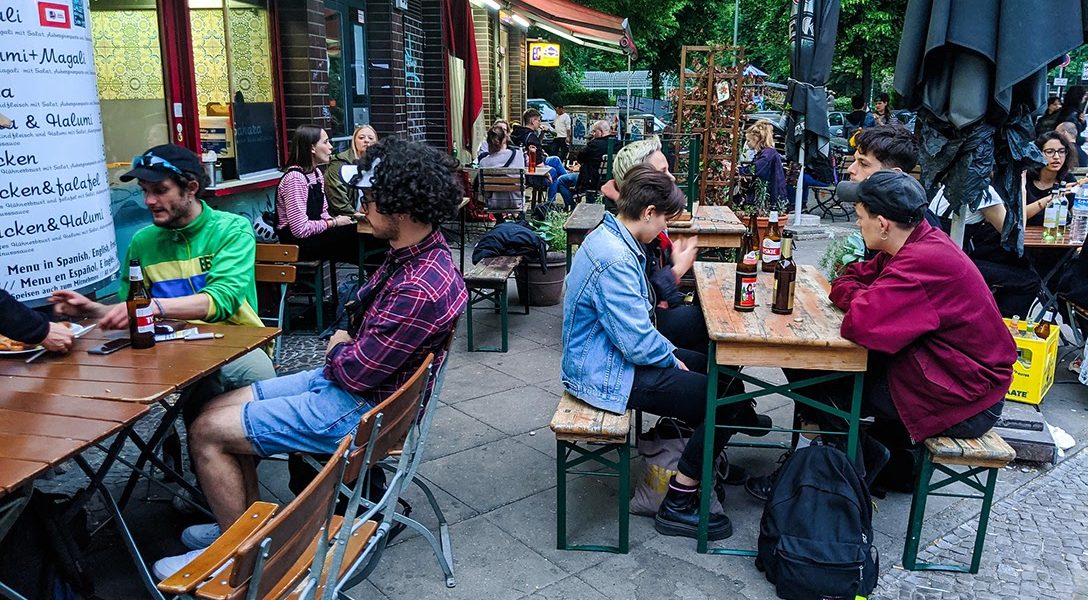Distanced Dining: The New Normal Night Out
European Restaurants Reopen Under Strict Regulations
Restaurants are struggling worldwide. Will Europe’s cafes and restaurants ever be the same?
As cities ground to a pandemic-induced standstill, the very places that once provided a welcome break from the pressure of modern life — restaurants, bars, and cafes — faced a threat to their own survival.
Quaint Parisian cafés hollowed out; German beer gardens devoid of merriment; bustling tapas bars silent — that was the picture in Europe even as the economy began to reopen.
With every passing week, the streets come a little more alive. However, tourism is one sector of the economy that has suffered grievously — with global losses projected to be at least $1.2 trillion. And restaurants, which notoriously get by on thin profit margins, are more at risk than ever.
While innumerable restaurants have closed, those lucky enough to be reopening their doors are dealing with challenges that strike at the core of the “eating out” experience: how can they resume their special connection with customers in a warm, friendly atmosphere?
Om Johar, owner of Mera Masala in Frankfurt am Main, Germany, describes the loss of the personal touch as his greatest frustration. “The people who are visiting my restaurant today are the people who bought coupons for future meals at my restaurant when everything was shut. So, these are the people who have made me stay afloat, helped me survive this dark time. Now that I can see them again, I can’t even hug them and thank them for being there for me. It makes me wonder, what all this virus has taken away from us, if we can’t even express gratitude properly.”
Staff must wear masks at all times, and must sanitize everything that will reach a table, from cutlery to the menu.
Germany opened its restaurants and bars on different dates in different states (between May 15 and May 29), with rules to maintain a 1.5-meter distance between staff and guests. They also ask diners to provide personal information — voluntarily — on a form kept at each table. This data is collected to make sure guests can be contacted immediately in case a coronavirus infection is identified. In addition, there is a strict regulation against keeping shareable items on tables, like salt and pepper shakers or sauce bottles. Staff must wear masks at all times, and must sanitize everything that will reach a table, from cutlery to the menu.
Emmanuelle Gonzalez — who runs a lively Mexican restaurant, Taco Haus, which is frequented by Americans in and around Frankfurt — believes everyone is craving a piece of normalcy. He reports that when he reopened in mid-May, his customers were very cautious about touching things and maintaining distance, but that they seem more comfortable now.
“They’re still iffy when they come in, which in turn makes us iffy, but at the same time, we want to communicate to them that we’ve made all arrangements for their safety, and that we want them to have a good time, above all else,” says Gonzalez.
He says that wearing masks makes communication difficult, but adds that about a half hour after customers enter the restaurant, he can feel “the air lighten up.”
The Reopening: How to Doll Up Dining During Social Distancing
Spain’s government requires a 2-meter distance and that staff wear masks. Oriana Bellardi, head chef of Dolores y Lola restaurant in Madrid, says she and her staff are doing everything they can, first and foremost, to make customers safe.
“At the backend, we’re taking innumerable precautions: not letting our regular sellers of meat and other special ingredients enter the premises, disinfecting every little thing as soon as we receive it.”
Yet, Bellardi says, customers walk in and are “visibly unsure of where to sit, what to touch, where to stand, [and] we are not able to put their minds at ease. When we have a mask on, you cannot see our warm smiles. When we try to crack a joke, the voice is so muffled because of the mask, that it gets misconstrued. And that, in turn, leads to innumerable awkward situations.”
“We’re just hanging onto the hope that tourists will return to Belgium soon.”
Meanwhile, staff are facing reductions in hours and pay. “Most of the restaurant owners have made all their employees work part-time instead of their original contract of full-time work, because the restaurants are not getting enough business,” a source from Madrid tells WhoWhatWhy.
Isabelle Nizet, co-owner of Horia Eatery in Brussels, says that before shutting down, the restaurant was doing rather well. “On June 8, we opened back up with EUR 30,000 in debt,” she says. “So, we’re just hanging onto the hope that tourists will return to Belgium soon.”
On the other hand, Nizet has noticed that locals are being supportive. She says that Horia has received a lot of positive feedback from guests since they reopened on June 8. “Customers just seem more attentive and more understanding than before.”
Arne Russchen, the owner and head chef of Restaurant Adam in Amsterdam, Netherlands, bemoans the challenges. “Our regular practice was to sit for a few minutes with every customer [at] their table, talk about their travels, how their week is going, and what they’d like to eat.” Now, that is out of the question.
The Netherlands reopened restaurants and bars on June 1, with the restriction of maintaining a 1.5-meter distance from people outside of one’s household. Guests are asked at the entrance if they have any cold-like symptoms. Reservations are required, as restaurants have determined how many guests they can safely accommodate at a given time.
Restaurant Adam has been operating at 50 percent capacity since reopening on June 1, and is one of the many restaurants in Amsterdam that have been hurt by the collapse of international tourism. According to Russchen, 70 percent of their clientele were tourists, so it has been difficult. However, many innovative ideas, such as champagne dinners or “pop-up restaurants” in gardens or other outdoor locations, are bringing in additional customers.
“All things considered, given that Amsterdam has 3600 restaurants, and we’re still pulling in about 60 percent of our business, I think we’ll pull through,” adds Russchen.
Related front page panorama photo credit: Adapted by WhoWhatWhy from Constructive Media / Flickr (CC BY 2.0).



